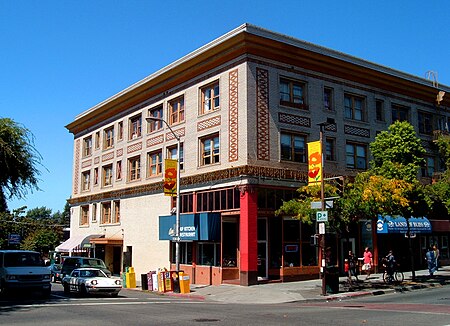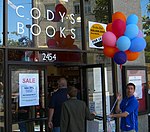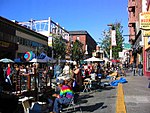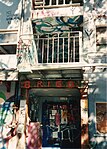The Chandler Building
1920s establishments in CaliforniaAlameda County, California building and structure stubsApartment buildings in CaliforniaBuildings and structures in Berkeley, CaliforniaResidential buildings completed in the 20th century

The Chandler Building (sometimes called the Chandler Apartments) is a historic building at the corner of Dwight Way and Telegraph Avenue in Berkeley, California. It is 4 stories tall. It was built in the 1920s. The building is the featured setting of a 2002 mystery novel The Chandler Apartments by Owen Hill, who wrote the book while living there. The building is currently unoccupied as a result of a fire on 22 November 2015. It is the former residence of novelist Jonathan Lethem.
Excerpt from the Wikipedia article The Chandler Building (License: CC BY-SA 3.0, Authors, Images).The Chandler Building
Dwight Way, Berkeley
Geographical coordinates (GPS) Address Nearby Places Show on map
Geographical coordinates (GPS)
| Latitude | Longitude |
|---|---|
| N 37.86525 ° | E -122.25871388889 ° |
Address
Dwight Way 2445;2447;2449
94704 Berkeley
California, United States
Open on Google Maps









